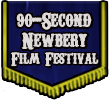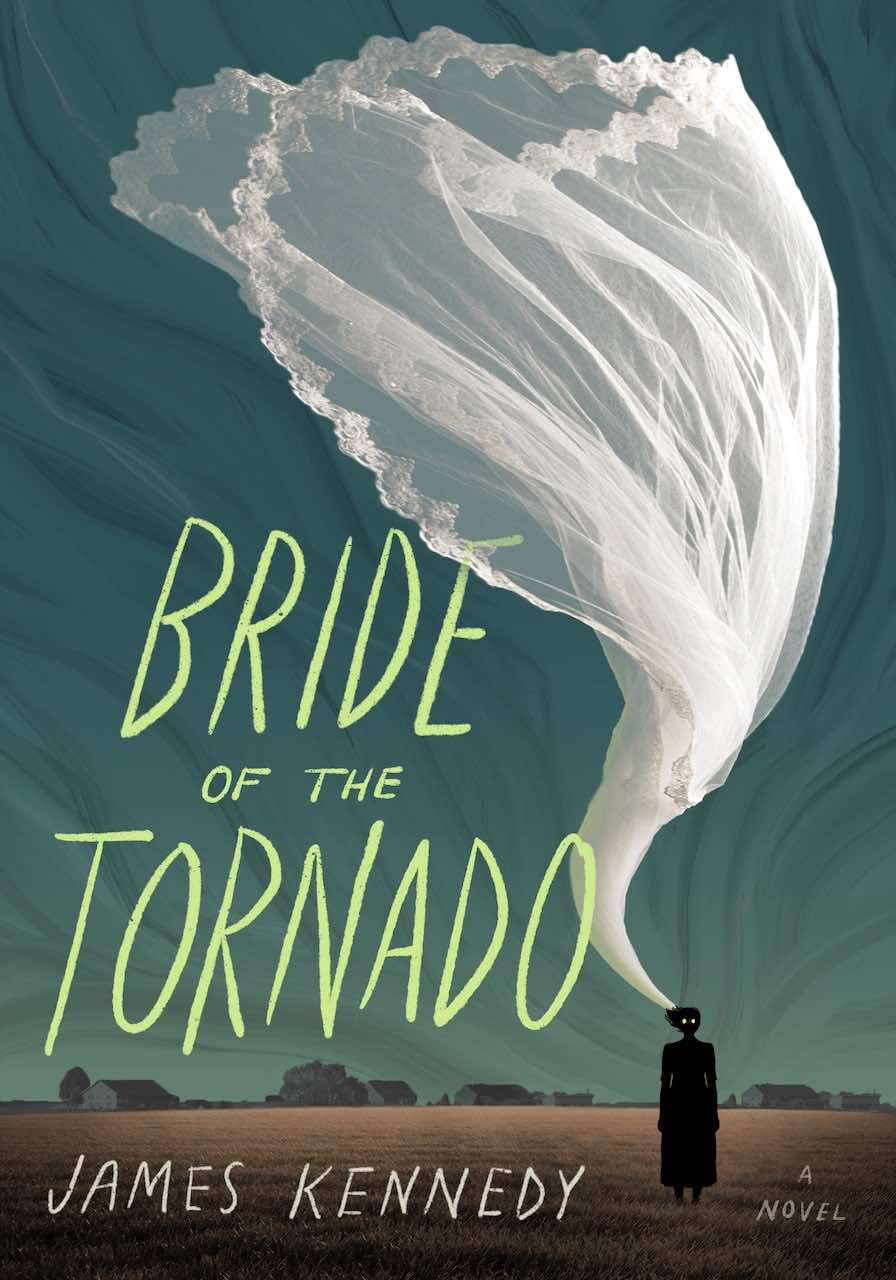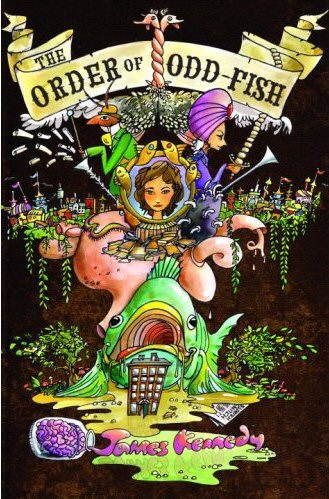Making 90-Second Newberys in a Pandemic
It’s the tenth year of the 90-Second Newbery Film Festival, and it’s turning out to be the weirdest one ever.
When the pandemic first hit, I wondered if we should even keep our dog-and-pony show going. In such dire circumstances, who really wants to make short movies about Newbery-winning books? But then I received emails from young filmmakers, as well as teachers, librarians, and families, asking how they could navigate the challenges of making movies for the 90-Second Newbery even in this crazy time (remember, those movies are due January 15, 2021. Complete info at www.90secondnewbery.com).
In the video above, I chat with Deb Ross (publisher of KidsOutAndAbout.com, media sponsor of the 90-Second Newbery) about how folks can get started in making 90-Second Newberys, including the challenges of making movies in quarantine. Below, I flesh out those points in much more detail!
Now, before going on to my pandemic-specific advice, it might be worth reviewing my step-by-step “How To Make A 90-Second Newbery” posts, especially if you haven’t read them yet:
Step 1: Watch Great Previous 90-Second Newberys
Step 2: Read The Book And Start Planning
Step 3: Breaking Your Story And Writing The Script
Step 4: A Crash Course In Cinematography
Step 5: Shot-By-Shot Analysis Of A Wrinkle In Time
I’ve gathered these and other resources, including information about free-to-use soundtrack music and sound effects, plus green screen and special effects, at the 90-Second Newbery “Video Resources” page.
But what about the peculiar challenges of making your movie in a pandemic? After all, filmmaking is a collaborative art form. Usually it takes a team to put together a movie. So how does one make a 90-Second Newbery movie with non-family members in a time of social distancing?
Looking over some of the best movies over the past nine years, I’ve come up with some ideas:
1. Do A One-Person Show!
What’s more socially-distanced than making the whole movie by yourself? Over the years, I’ve received so many resourceful, fantastic movies for the film festival that are essentially one-person shows. For instance, Leo Lion of Brooklyn did this classic adaptation of Lois Lowry’s 1994 Medal Winner The Giver:
Amazing! Why does it work so well? Because it’s not careless. It’s much more than just some kid mumbling a summary of a book into a laptop camera in one unbroken take. In particular, this movie works because Leo plays so many different roles in such a short time. It’s fun to watch when the same actor is having a conversation with himself! Leo accomplishes this with a lot of rapid-fire goofy costume changes, and different voices too. The editing is quick and brisk—not a second is wasted. Leo clearly made this movie with a tight script and a specific plan. The movie also manages to include real action and visual storytelling, like when the Jonas character is riding a bike or hiding the baby from the pursuers. There’s even a clever interplay between voiceover and spoken dialogue.
Leo also did a great job framing the shots. I’m guessing he set his camera on a tripod. That clearly worked for him, but if possible, I do recommend you have an accomplice behind the camera. You don’t want to film a whole scene and then realize that the camera was angled such that your head was cut off!
Here’s another one-man show, but this one goes in a completely different direction. It’s Elizabeth George Speare’s 1984 Newbery Honor Book Sign of the Beaver, as adapted by Corbin Stanchfield. Corbin’s twist for his one-man show? He tells the story as a one-man musical! In three minutes, Corbin zips through seven decades of popular music, telling the story through songs by the Beatles, Elton John, Michael Jackson, Nirvana, and more. At times Corbin even multiplies himself through the magic of camera trickery!
Amazing work! Just as in Leo’s movie, Corbin does lots of costume changes to portray many different characters, which is essential for a one-person show. He also keeps it interesting by constantly switching songs. If you’re going to do a one-person show, realize that folks will quickly get tired of looking at one person, so you must use all your ingenuity to keep the audience interested, whether it be by costume changes, voice changes, scenery changes, music, special effects, weird twists, lots of physical action (dancing, fighting, running around) . . . whatever you do, don’t just sit there in your normal clothes dully reciting the plot points of the book! Make it surprising!
And here’s yet another one-man show, a hilarious one in which Charlie from Highland Park, IL does an adaptation of Gary Paulsen’s 1988 Honor Book Hatchet entirely inside a VR headset:
Charlie’s movie works because he has a strong comedic concept that he sticks to for the entire movie: the ironic ridiculousness of doing “wilderness survival” in virtual reality. Watching Charlie bumble around “making fire” by rubbing two bananas together, or “swimming” by fiddling with water in a sink, pays off the premise again and again.
So much for one-person shows! What are other options for making a 90-Second Newbery without a big group?
2. Make A Stop Motion Movie!
Stop motion movies are fun to watch, and they’re easier to make than you might expect. You don’t need a big group to make a stop motion video. In fact, making a stop motion movie is often most effectively accomplished alone!
Free software is available to help you make your stop motion video. For instance, if you have an iPhone, you can download a free app called Stop Motion that makes it easy to make stop motion movies. I myself use this app as the first step in making my own stop-motion movies—shooting the movie with the app, then exporting the footage to iMovie to fine-tune it and add sound, dialogue, and other effects.
When shooting a stop motion movie, it’s important for the camera to be absolutely still—you can’t just hold it in your hand! To do this, you could rig up a homemade tripod, but great tripods like this one can be had for pretty cheap. My daughters and I use this very tripod for our stop motion projects.
Enough advice, let’s look at some excellent stop motion 90-Second Newberys! For instance, Anya Schooler made this mind-blowing Claymation version of Mary and Conrad Buff’s 1952 Honor Book The Apple and The Arrow:
I swear, some of Anya’s clay figures are better actors than real people! I love how Anya made it clear who was speaking by taking the time to animate their mouths. Also notice how Anya synched up the action with the music, especially during the crucial arrow-shooting scene. Also notice how Anya employed a variety of shots: close-ups, wide shots, reaction shots, insert shot, medium shots, and more (you can learn more about different kinds of shots in my crash course in cinematography). Want to see more of Anya’s fantastic stop-motion work? You can also check out her excellent adaptation of Ruth Stiles Gannett’s 1949 Honor Book My Father’s Dragon.
Another good medium for stop motion: Legos! You probably have some Legos sitting around the house, ready to use. Ezra used Legos in this astonishing adaptation of Patricia Lauber’s 1987 Newbery Honor Book Volcano: The Eruption and Healing of Mount St. Helens:
Masterful! Again, notice the variety of well-chosen shots, with perfect music and sound effects. Ezra also made sure to do the animation with artful backdrops, so that we’re not just seeing random distracting stuff in the background like a kitchen or messy bedroom. Ezra even includes the kind of goofy, subversive twist that makes for a great 90-Second Newbery movie: in his version, the volcano’s eruption wasn’t caused by natural tectonic processes, but rather mischievous underground creatures. The crazy animal party was a great way to end it, too! Always end your movie on a high note, with something memorable or funny!
There are countless kinds of stop motion animation you can do. Here’s another way: paper animation! Kevin and his friends made this irresistible version of E.B. White’s 1953 Newbery Honor Book Charlotte’s Web:
Delightful! Kevin made all the puppets, and animated them himself, and then recruited friends to do the voices. Such a strategy is easily adaptable to our social-distanced reality: you can ask your friends to record their lines on their computers, and then send you the audio files, which you can drop straight into the movie. The animated mouths on the talking characters are fun to watch, and help us keep track of who was talking . . . and notice, Kevin he didn’t just have characters standing around talking. There’s quite a bit of physical comedy too, especially when the rat gets squished. If you’re making a stop-motion movie, make your characters do things that would be difficult to portray if you were shooting it with live humans!
Interested in other excellent stop-motion 90-Second Newberys? Don’t miss this jaw-droppingly ingenious adaptation of Miska Miles’ 1972 Honor Book Annie and the Old One by Alinne and Brenda, or this inventive and funny adaptation of Kate DiCamillo’s 2014 Medal Winner Flora & Ulysses by John and Meg, or this impressive adaptation of Jerry Spinelli’s 1991 Medal Winner Maniac Magee by Lamar Elementary in San Antonio. Watch them all, you’ll learn great lessons of stop motion from each!
Okay, let’s move on from stop motion, because there’s another way to make a movie without using live humans . . .
3. Make A Puppet Show!
You don’t need a big group to put on a puppet show. But please! Your puppet show can’t just be scribbled pencil drawings on a floppy piece of looseleaf paper taped to a ruler, bobbing in front of the camera while someone mutters the lines in the background, with no editing or cinematography!
You’ve got to make (or buy) robust and fun-to-look-at puppets. Scout out a variety of locations, and/or construct a variety of sets—that is, don’t do the whole puppet show in front of one boring background. Also, vary the shots: do close-ups, or wide-angle shots, or over-the-shoulder dialogue shots, etc., just like you would with a real-life movie. And finally, you should take advantage of the crazy physical actions only puppets can do—actions that would be difficult or dangerous for a live person. The classic 90-Second Newbery example of great puppetry is of course this version of Arnold Lobel’s 1973 Honor Book Frog and Toad Together, done by the Zenz family:
Astonishingly good! The puppetry is ingenious: note the mechanism that makes Frog and Toad look like they are “drinking” coffee, the use of thread to make Frog and Toad “climb” the mountain, or how the background blurs when they’re running away (accomplished by holding the puppets out the window of a speeding car). And that snake made out of a sock! And that hilarious avalanche! The puppetry is fascinating to watch, and the editing keeps the story moving quickly.
Also, notice that the puppetry was done first, and then voices and harmonica were dubbed in later. Don’t use the on-set performances for your dialogue! Edit the movie together properly first, and then later on dub in the dialogue, music, and sound effects so you can do them in a thoughtful and careful way.
The Zenz family also made this version of Grace Lin’s 2010 Honor Book Where the Mountain Meets the Moon with shadow puppets:
Beautifully done! Again, notice how the movie zips through the plot quickly and clearly. We always know what’s going on, even though the video moves at a breakneck pace. Color is used sparingly, and so when it is used, it’s all the more effective. The puppets are well-crafted: none of these are just careless sketches, but elaborate works of art. We also see a great variety of puppets, not just two or three. Finally, the puppets are always in motion doing things. Too many puppet shows are just two inert pieces of paper standing there taped to pencils or whatever, and the puppeteers jiggle whatever puppet happens to be “talking.” Um, that’s super boring to watch! Make your puppets move! For instance, I love how in the above movie, Minli’s character literally flies into the sky to meet the man in the mountain.
A note about what kind of puppets to use: I recommend against using sock puppets or paper bag puppets for your show. They’re rarely interesting to watch. And if your puppets are just drawings on flat pieces of paper, at least make sure they’re well-drawn, and that you use a variety of shots and puppet movement to keep it interesting.
4. Computer animation!
It’s never been easier to make a movie entirely with computer animation. You can do things that are impossible in real life, and even things that are difficult to accomplish with stop-motion animation or puppets!
There are free, easy-to-use apps like Pencil2D that can be used to quickly animate your hand-made drawings right in the app. Here’s a hint, though: you don’t have to animate every moment of your movie! You can do something more like an animatic—essentially, an animated storyboard—like in this animated movie by Reyna, a version of Jacqueline Kelly’s 2010 Honor Book The Evolution of Calpurnia Tate, in a kind of manga-style animatic:
I love how Reyna was able to so effectively convey the emotions of her characters, and convey the essence of certain movements and transitions through a few well-chosen transitional pictures. Want to see more examples of great hand-drawn movies made with the assistance of animation apps? Check out Angela’s animated version of Gary Paulsen’s 1988 Newbery Honor Book Hatchet, and also Siena, Yaretzy, and Tatevik’s animation of Jerry Spinelli’s 1991 Medal Winner Maniac Magee.
So we’ve seen above how computers can help with hand-drawn animation. But how about other kinds of computer animation?
For instance, did you know you could make movies in Minecraft? This version of Wanda Gag’s 1929 Honor Book Millions of Cats was done in Minecraft by the kids at the Tacoma Public Library, and it’s pretty much perfect:
Notice how the creators use Minecraft cinematically. This movie is not just some gamer mumbling lines over a Minecraft playthrough. The shots are thoughtfully composed; there are frequent cuts from one shot to another; there are even symmetrical montages (the series of shots when the old man is going out searching for cats, followed by the series of shots when the old man is coming back with the cats). Crucially, it also doesn’t include all the extra graphical cruft Minecraft throws up onto the screen. In short, the creators use Minecraft as filmmakers, not as gamers. They captured the video they needed in Minecraft, then exported it to some editing software like iMovie to edit it and add dialogue, sound effects, and music. That’s what you need to do to make a good Minecraft 90-Second Newbery.
Sounds like a lot of trouble, but look at the results! The camera can do things in Minecraft that are difficult to do in real life (like those high-in-the-sky shots), and it’s much easier to get a bunch of cats to all run in the same direction in Minecraft than in reality!
By the way, Minecraft isn’t the only way you can make animations with computer games—also known as machinima. How about making a movie with World of Warcraft? Or Fortnite? Or Second Life? There was even a kid named Tanner who created a computer-animated movie based on Sid Fleischman’s 1987 Medal Winner The Whipping Boy using an obsolete 90s-era software called “Microsoft 3D Movie Maker,” and the results are bonkers and satisfying:
You can also make your own RPG-style games and create movies out of them using RPGMaker. I’ve never seen a 90-Second Newbery made in this style before, it might be worth looking into!
Another accessible way to do computer animation is through the computer language Scratch. There are lots of tutorials in Scratch animation here. But please, if you use Scratch, put some work into it! Nobody wants to watch a clunkily-animated video that simply uses Scratch’s default sprites and backgrounds.
That brings us to a broader point: no matter how you animate, though, make sure it’s actually good. There’s nothing more depressing than a lazily-made, boring animation. Make no mistake, a mediocre animation is way worse than the worst live-action video. But a great animation can be amazing!
One last thing about computer animation. I don’t recommend you use the Powtoon app. Most animations made with it, with their premade characters and backgrounds, are pretty boring. It’s so bad, I’m not even going to link to it. Stay away from Powtoon!
5. How about a Rube Goldberg machine?
Okay, I haven’t seen anybody do this for a 90-Second Newbery movie yet, but I really wish somebody would. Have you ever heard of a Rube Goldberg machine? That’s a “machine intentionally designed to perform a simple task in an indirect and overly complicated way. Usually, these machines consist of a series of simple unrelated devices; the action of each triggers the initiation of the next, eventually resulting in achieving a stated goal.”
Usually it starts with someone doing one small action, which leads to a chain reaction of things happening, in the end crazily spectacular and out of proportion with the initial action. You can see a fine example of a Rube Goldberg machine in the band OK Go’s video for “This Too Shall Pass”:
Pretty impressive, right? Well what if somebody made a Rube Goldberg machine that, along the way, somehow told a story of a Newbery-winning book? Obviously it doesn’t have to be as elaborate as that video, but I bet when you’re cooped up at home, this would be a cool project! That would be an amazing 90-Second Newbery!
Final Note: How To Collaborate When You’re Socially Distanced?
With stop-motion, puppets, and with computer animation, a filmmaking group can divide tasks! Maybe one group member can animate the beginning of the movie, another kid can animate the middle, and a third kid can animate the end. In fact, it might even be really cool to have different parts of the same movie animated in different styles! What if the beginning is with stop-motion, the middle is with puppets, and the end is done with computer animation? And of course everyone can contribute voices for the dialogue to be dubbed in once the animation is finished.
For instance, check out Portland Community Media TV’s animated version of Frog and Toad Together. There are five stories in that book, and this movie animates each in a different style. The first is hand-drawn on a dry-erase board; the second is three-dimensional cut-paper stop motion; the third is animated sock puppets; the fourth is Claymation; and the fifth seems to be computer animated. A great way to divide up the work and pique visual interest, by occasionally switching the style of animation! Here it is:
Speaking of collaboration: it’s also OK for family to help, especially parents. Editing can be difficult and laborious and time-consuming, especially for kids just starting out. If parents or siblings can help with editing, or making costumes and sets, or holding the camera, or even in co-starring, that’s fine. In fact, we encourage it! Moviemaking is by its nature a collaborative process.
I hope this inspires you for your 90-Second Newbery! Remember, your movies are due on January 15, 2021. Complete information about the 90-Second Newbery Film Festival, including contest rules and details on how to submit, can be found at www.90secondnewbery.com.














